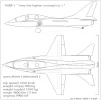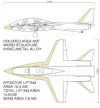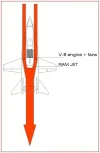Install the app
How to install the app on iOS
Follow along with the video below to see how to install our site as a web app on your home screen.
Note: This feature may not be available in some browsers.
You are using an out of date browser. It may not display this or other websites correctly.
You should upgrade or use an alternative browser.
You should upgrade or use an alternative browser.
Ilmavoimien tulevaisuus
- Viestiketjun aloittaja Museo
- Aloitus PVM
-
- Tagit
- ilmavoimat tulevaisuus
Kohta lähtee hornettiparvi kohti italiaa ja se ei ole halpaa 
Mukana seuraa sitten jalkaväkeä
Pittää puolustaa suomea rajoen ulkopuolella
Ai niin, paljonkos pitikään puottaa henkilöstöä pv:n palkkalistoilta? Piisaako 2500 henkilötyövuotta?
Rahhaa on, kun sen oikein kohdistaa..

Mukana seuraa sitten jalkaväkeä

Pittää puolustaa suomea rajoen ulkopuolella

Ai niin, paljonkos pitikään puottaa henkilöstöä pv:n palkkalistoilta? Piisaako 2500 henkilötyövuotta?
Rahhaa on, kun sen oikein kohdistaa..
Hejsan kirjoitti:En tiedä mikä Sukhoi/MIG malli tämä on mutta näyttä Hi-Techiltä
Mig lienee kyseessä. 29 ja 33 mallivaihtoehtoina. Ei OLEKAAN
Sukhoissa (27) taitaapi tuo ilmeisesti IR-etsin olla keskeisemmin sijoitettu.
Korjatkaa sikäli, jos väärin veikkasin.
EDIT:
Sittenkin uusi veikkaus. SU-30 MKI
Tässä muutama kuva jos työnlaatua halutaan vertailla.
JF-17 (halpishävittäjä)
http://www.flickr.com/photos/quintinsmith/4862687047/sizes/l/in/set-72157624534547039/
Suomalainen Hornet
http://www.flickr.com/photos/saminkuvat/4621880209/sizes/o/
http://www.flickr.com/photos/saminkuvat/4621856657/sizes/o/
SU-30
http://www.flickr.com/photos/mistyimages/4371598261/sizes/z/
http://www.flickr.com/photos/mistyimages/4372330264/sizes/z/
SU-35
http://www.flickr.com/photos/joseluiscel/3903059911/sizes/o/
JF-17 (halpishävittäjä)
http://www.flickr.com/photos/quintinsmith/4862687047/sizes/l/in/set-72157624534547039/
Suomalainen Hornet
http://www.flickr.com/photos/saminkuvat/4621880209/sizes/o/
http://www.flickr.com/photos/saminkuvat/4621856657/sizes/o/
SU-30
http://www.flickr.com/photos/mistyimages/4371598261/sizes/z/
http://www.flickr.com/photos/mistyimages/4372330264/sizes/z/
SU-35
http://www.flickr.com/photos/joseluiscel/3903059911/sizes/o/
Mulla on tuosta "mopokoneesta" hieman pidemmälle viety versio Ilmavoimille korvaamaan Hawkit.
Ilman jälkipolttimia ja todella huokea ja yksinkertainen.
Yksipaikkaisena jälkipolttimella tämä kykenisi kurvataisteluun mitä tahanansa olemassa ja piiruspöydällä olevaa konetta vastaan menestyksellisesti kahdella 20 mm tykillä varustettuna.
Realismia tässä on sen verran että HBA saitilla A4 Skyhawkin suunnitellut kaveri kommentoi sitä eilen.
Rakenteena hiilikuitu ja vaneri !
Moottorina Eclipse 500:n PW610F; http://en.wikipedia.org/wiki/Pratt_%26_Whitney_Canada_PW600

Ilman jälkipolttimia ja todella huokea ja yksinkertainen.
Yksipaikkaisena jälkipolttimella tämä kykenisi kurvataisteluun mitä tahanansa olemassa ja piiruspöydällä olevaa konetta vastaan menestyksellisesti kahdella 20 mm tykillä varustettuna.
Realismia tässä on sen verran että HBA saitilla A4 Skyhawkin suunnitellut kaveri kommentoi sitä eilen.
Rakenteena hiilikuitu ja vaneri !
Moottorina Eclipse 500:n PW610F; http://en.wikipedia.org/wiki/Pratt_%26_Whitney_Canada_PW600

Liitteet
Mikäli havainnoitte niin tuo on kutakuinkin kooltaan ½ F-5 Freedom Fighterista ja noin 2,5 kertaa pienempi kuin J-20 ( eli 2,5 x 2,5 x 2,5 tilavuudeltaan ~ 1
/ 15,6 ). Eli tehopaino suhde itseasiassa parempi kuin J-20:llä. Afterburnerilla olisi aivan mieletön ( SR-71 luokkaa ).
Mitä luulette jos chaffia ja flareja riittää..miten pitkälle 2:lla 20 mm tykillä voidaan ylipäänsä sotia..onko ohjukset must ?
Muutaman sekunninkin JP antaisi aina mahdollisuuden paeta paikalta ellei kone sula sitten kitkasta ( mach II limit ? ).
-------------------------------------
SR-71 pintalämpötila 3,2 machin matkanopeudella oli 500 C astetta..ja tuulilasissa 250 C.
http://en.wikipedia.org/wiki/Lockheed_SR-71_Blackbird#cite_note-85
/ 15,6 ). Eli tehopaino suhde itseasiassa parempi kuin J-20:llä. Afterburnerilla olisi aivan mieletön ( SR-71 luokkaa ).
Mitä luulette jos chaffia ja flareja riittää..miten pitkälle 2:lla 20 mm tykillä voidaan ylipäänsä sotia..onko ohjukset must ?
Muutaman sekunninkin JP antaisi aina mahdollisuuden paeta paikalta ellei kone sula sitten kitkasta ( mach II limit ? ).
-------------------------------------
SR-71 pintalämpötila 3,2 machin matkanopeudella oli 500 C astetta..ja tuulilasissa 250 C.
http://en.wikipedia.org/wiki/Lockheed_SR-71_Blackbird#cite_note-85
Sen verran tein laskelmia ton 2 moottorisen kanssa ja tutkimusta että huokein tapa tehdä tuosta faitteri olisi ostaa puoli-ilmaisia Lear Jet 24B ( vm 1970 ) GE CJ610 ( JT85 ) moottoreilla ja ottaa ne varaosiksi asentaa niihin jp. tehopainosuhde olisi miltei 3 x parempi kuin J-20 Kiinan ylpeydellä ( tehot ja painot Wikistä )...JT 85 sopisi kooltaan tuohon innovaatiooni kuin nenä päähän. Asejärjestelmistä en osaa sanoa muuta kuin että ainakin 2 x 20 mm tykit saisi matkaan.
Onko pieni sittenkin parempi ?
Onko pieni sittenkin parempi ?
Boeing engineers: We should have won F-35 fighter contract
http://www.bizjournals.com/seattle/blog/2011/04/boeing-engineers-we-should-have-won.htmlMany Boeing engineers still grumble that Boeing’s design for the joint strike fighter, not Lockheed Martin Corp.’s, should have won the Air Force contract a decade ago to build the aircraft now known as the F-35.
Lockheed Martin’s October 2001 win cemented its lead as builder of the nation’s most numerous next-generation fighter.
Then touted as a $200 billion contract for 3,000 aircraft, the competition carried even more weight than the just-concluded fight over the Air Force tanker, which Boeing (NYSE: BA) did win.
The joint strike fighter was intended to be a low-cost fighter for all three branches of the military that was simultaneously stealthy and supersonic — and in the U.S. Marines version, able to land vertically like a helicopter.
Lockheed’s (NYSE: LMT) version of the F-35 has been riddled with cost overruns and technical difficulties, especially for the “short take-off and vertical landing” version, otherwise known as the STOVL.
High costs and technical issues have caused the program to be restructured twice in two years, and some expected overseas customers have been balking at the rising price tag. Last year Defense Secretary Robert Gates put the STOVL version on probation until issues could be resolved.
“Whenever we hear about Lockheed’s difficulties with the JSF, we all look at each other, and say, “They didn’t pick the right product,’” said Cynthia Cole, a former flight test engineer on the Boeing program from 1997 through 2002. Cole, now working outside Boeing, also was president of the Society of Professional Engineering Employees in Aerospace from 2006 through 2010.
In particular, Boeing engineers mutter about the STOVL version. They claim that Boeing’s design, which relied on rerouting the thrust of the main engine, would have been more trouble-free than the Lockheed Martin design, which also includes a central shaft-driven fan.
“I thought our vertical takeoff model was far superior,” Cole said. “The design was definitely cutting edge, it was new technology. We really thought it was going to win the day for us.”
Bill Sweetman, who reports military aircraft for Aviation Week and Space Technology magazine, does concede that the Boeing version was simpler and “eliminated some of the more complicated moving parts on the Lockheed design.”
But he contends that the Lockheed Martin design STVOL performed better on the test aircraft.
“If you look back to that competition, and you look at what was happening at the time, the only way it (the Boeing version) did a vertical landing was with inlet lip and landing gear doors removed,” Sweetman said about the Boeing design. “It would have been very hard to award to Boeing, because they hadn’t properly demonstrated vertical landing.”
But Cole disagrees, and adds that Boeing had finished its prototypes under budget and before deadline.
She said the announcement of Lockheed Martin’s win was a big surprise, because Boeing insiders in Washington, D.C. thought they were ahead.
“Everybody was really bummed,” she said. “We had the cafeteria filled, and once the announcement was made, everybody just walked away.”
In a way, that's the opposite of the recent Air Force tanker award, which most observers, even some within Boeing, had thought would go to rival EADS.
A consolation prize for Boeing has been that delays in Lockheed’s version of the F-35 have kept Boeing fighter assembly lines in St. Louis rolling, as the Navy has continued to order F/A-18/EF Superhornets.
Intialaisten näkemyksiä koneista. Nyt siellä on vastakkain Eurofighter ja Rafale, voittaja julkistetaan tämän vuoden lopulla.
live update from Vishnu's pgm which quotes MOD 'sources'
- Mig35 - did poorly in trials
- Gripen - radar underdeveloped. plane itself underdeveloped
- F18 - performance concerns , after sales service concerns
- F16 - future development limited, intrusive US laws
price shown in EF - rafale comparison slide was Euro 90 mil vs Euro 63 mil
Eurofighter ja Rafale taitavat olla jo vanhoja silloin kun meille valitaan uutta häätäjää.
Jotain aivan uutta tulisi kehitella joka ottaa huomioon sotatalouden ja suorityskyvyn.
Itse lähtisin tästä ja siitä kehitystä hieman isommaksi;
http://www.homebuiltairplanes.com/forums/attachments/light-stuff-area/12125d1304324322-single-engine-lifting-body-micro-lite-15-hp-aaa3_gm_af1cab-1115.jpg
Nythän taannoin lahtelaiset mm. kehittelivät Flynanon ( www.flynano.com ). Aiheuttanut kovaa keskustelua maailmalla.
Jotain aivan uutta tulisi kehitella joka ottaa huomioon sotatalouden ja suorityskyvyn.
Itse lähtisin tästä ja siitä kehitystä hieman isommaksi;
http://www.homebuiltairplanes.com/forums/attachments/light-stuff-area/12125d1304324322-single-engine-lifting-body-micro-lite-15-hp-aaa3_gm_af1cab-1115.jpg
Nythän taannoin lahtelaiset mm. kehittelivät Flynanon ( www.flynano.com ). Aiheuttanut kovaa keskustelua maailmalla.
Teräsmies kirjoitti:Intialaisten näkemyksiä koneista. Nyt siellä on vastakkain Eurofighter ja Rafale, voittaja julkistetaan tämän vuoden lopulla.
live update from Vishnu's pgm which quotes MOD 'sources'
- Mig35 - did poorly in trials
- Gripen - radar underdeveloped. plane itself underdeveloped
- F18 - performance concerns , after sales service concerns
- F16 - future development limited, intrusive US laws
price shown in EF - rafale comparison slide was Euro 90 mil vs Euro 63 mil
Toivottavasti tulee jossain vaiheessa tarkempaa tietoa.




